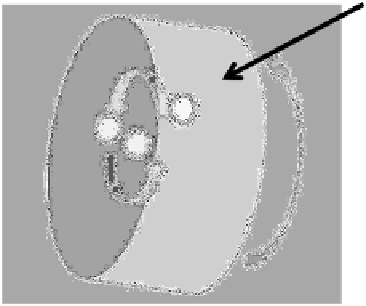Biomedical Engineering Reference
In-Depth Information
tissue
in vitro also needs a complex mechanism that can increase the
diffusion rates of oxygen and nutrients by building new bioreactor
technologies. This section introduces novel bioreactors for creating
an artificial and effective environment enhancing the diffusion of
supplements for engineered myocardial tissues.
6e.2
Bioreactors under Microgravity
Normally cultured cells can only build a two-dimensional structure
because they precipitate and adhere to the bottom of the dish by
gravity. Therefore, many attempts have been designed to prepare
engineering tissue by stirring the culture medium or employing a
three-dimensional (3D) gel culture system as artificial biomaterials
[8-10]. However, stirring the culture medium with a high shear stress
and the suppression of culture medium penetration into highly dense
cells leads to their necrosis in the tissue. To solve this problem, the
microgravity culture method is designed for fabricating 3D tissue.
A microgravity bioreactor creates an environment providing 1/100
ground gravity by continuously varying the direction of gravity, called
rotating wall vessel (RWV) (Fig. 6e.1). The rotating vessel suspends
cells and forms 3D aggregates in the culture medium. In an RWV,
laminar flow at the surface construct is found, and the maximum
shear stress is on the order of 0.8 dynes/cm
2
, when a 120 mL RWV
contains one model construct, and the inner and outer cylinders of
Vessel
Cell
Figure 6e.1
Rotating wall vessel.




